# 阿里云oss
# 如何实现用户头像上传与存储?
问题:用户图片多且杂,不易维护,不易扩展
解决:存储到第三方服务器,如阿里云
优点:自动扩容,后台可维护
实现图片上传服务,需要有存储的支持,那么我们的解决方案将以下几种:
直接将图片保存到服务的硬盘(springmvc将的文件上传)
- 优点:开发便捷,成本低
- 缺点:扩容困难
使用分布式文件系统进行存储
- 优点:容易实现扩容
- 缺点:开发复杂度稍大(有成熟的产品可以使用,比如:FastDFS)
使用第三方的存储服务
- 优点:开发简单,拥有强大功能,免维护
- 缺点:付费
- 缺点:付费
选用阿里云的OSS服务进行图片存储。
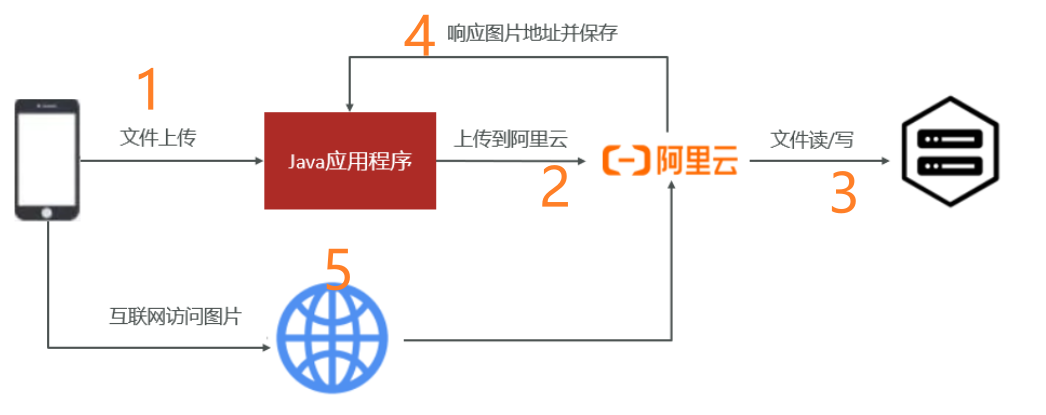
# 01)概述
对象存储服务(Object Storage Service,OSS)是一种海量、安全、低成本、高可靠的云存储服务,适合存放任意类型的文件。容量和处理能力弹性扩展,多种存储类型供选择,全面优化存储成本。
地址:https://www.aliyun.com/product/oss
# 02)账号申请
注册并开发阿里云OSS的步骤如下
- 注册阿里云账号
- 开通对象存储OSS功能
- 购买服务
- 创建Bucket
- 代码测试
# 2.1)开通对象存储OSS功能
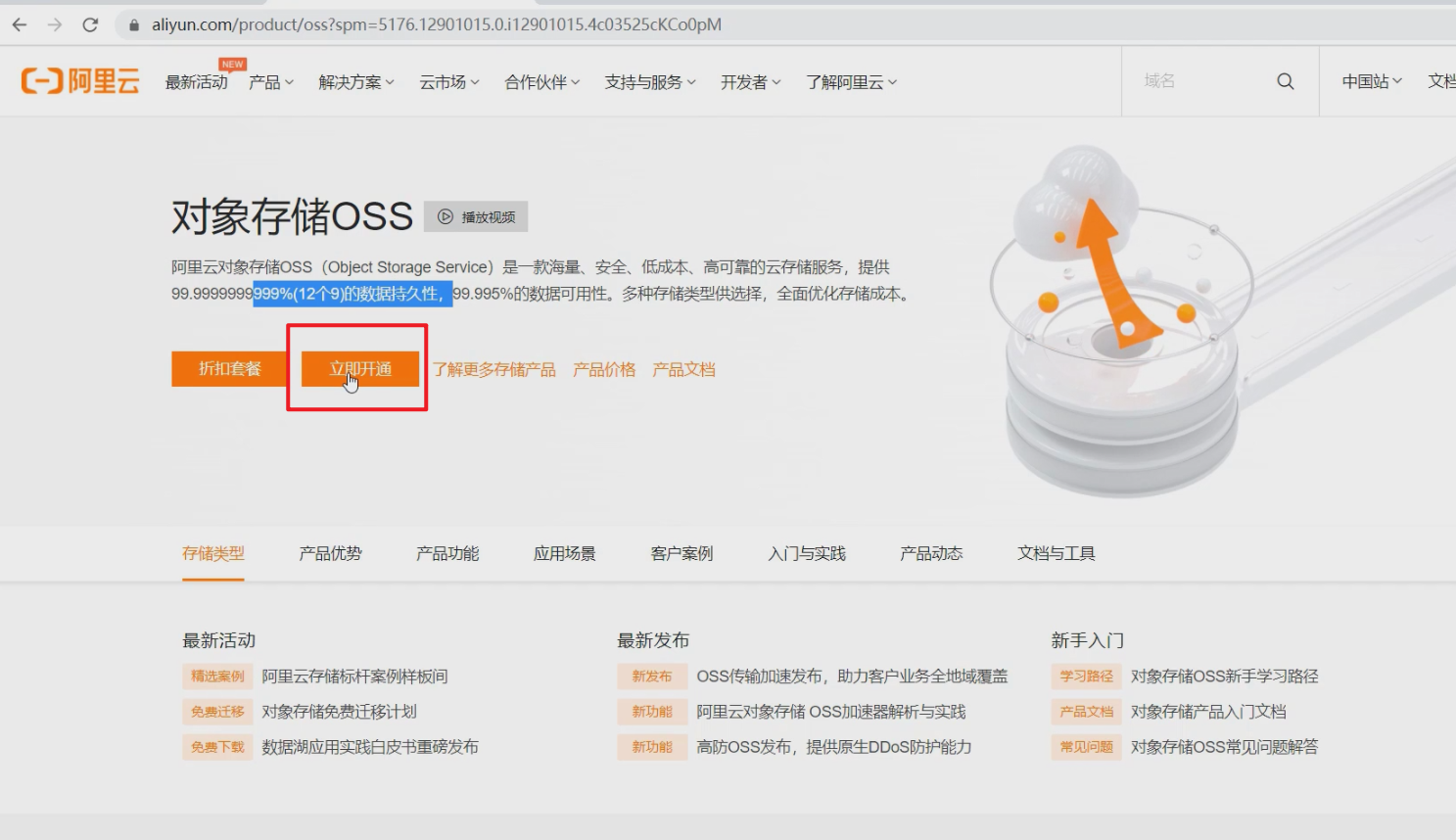
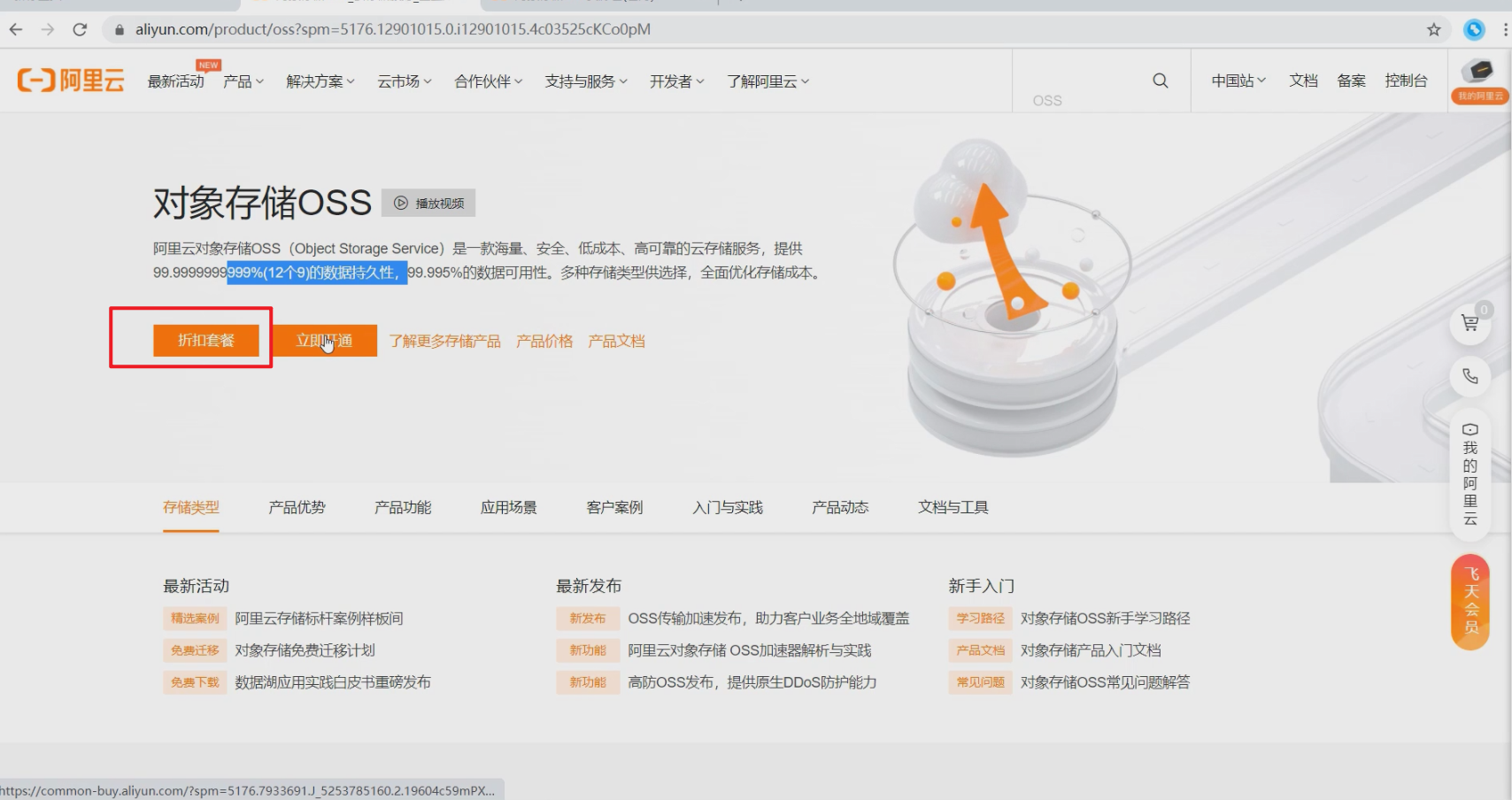
注意
购买下行流量包: (不购买也可以使用,按照流量付费)
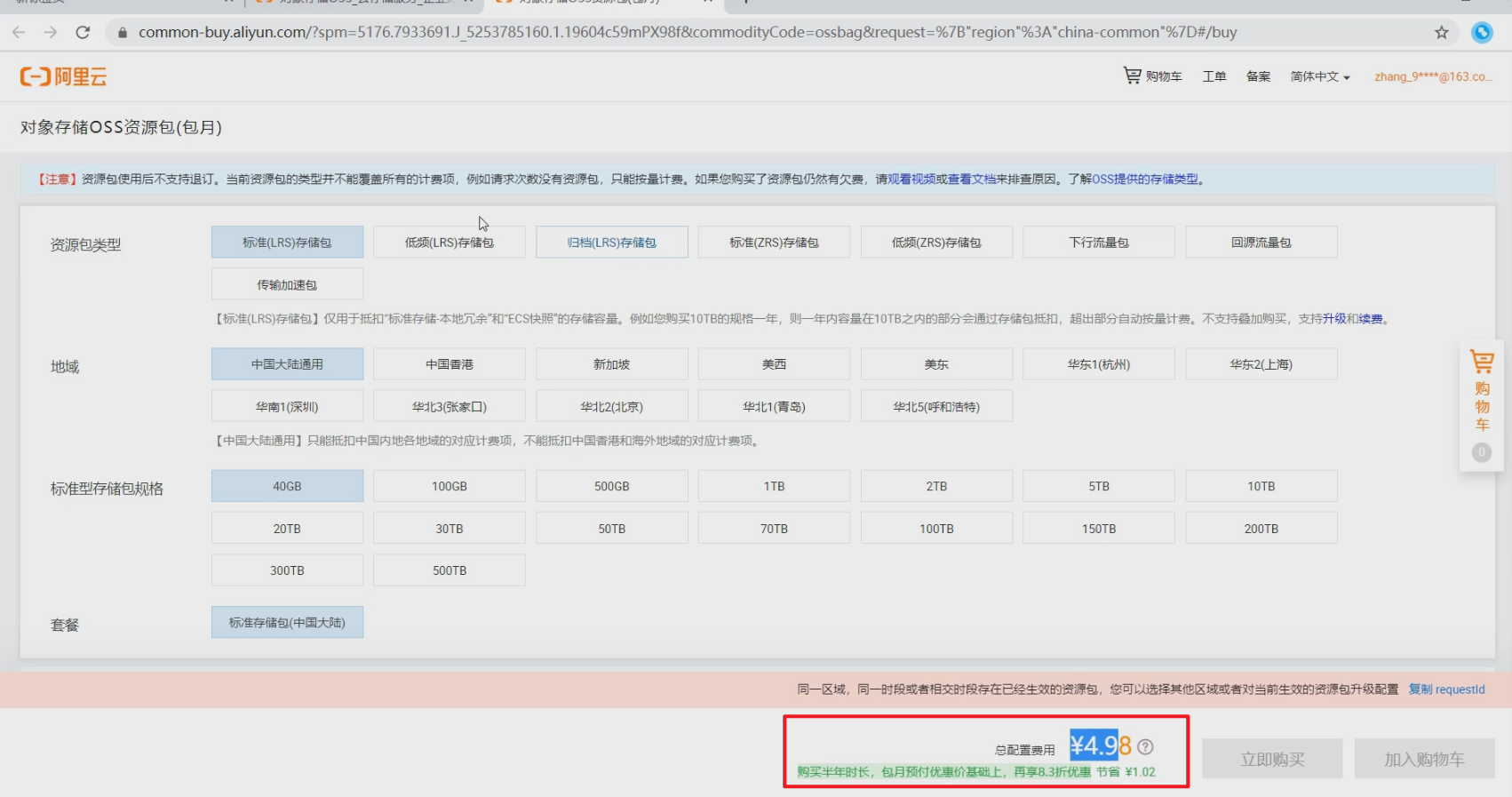
注意
说明:OSS的上行流量是免费的,但是下行流量是需要购买的。
# 2.2)创建Bucket
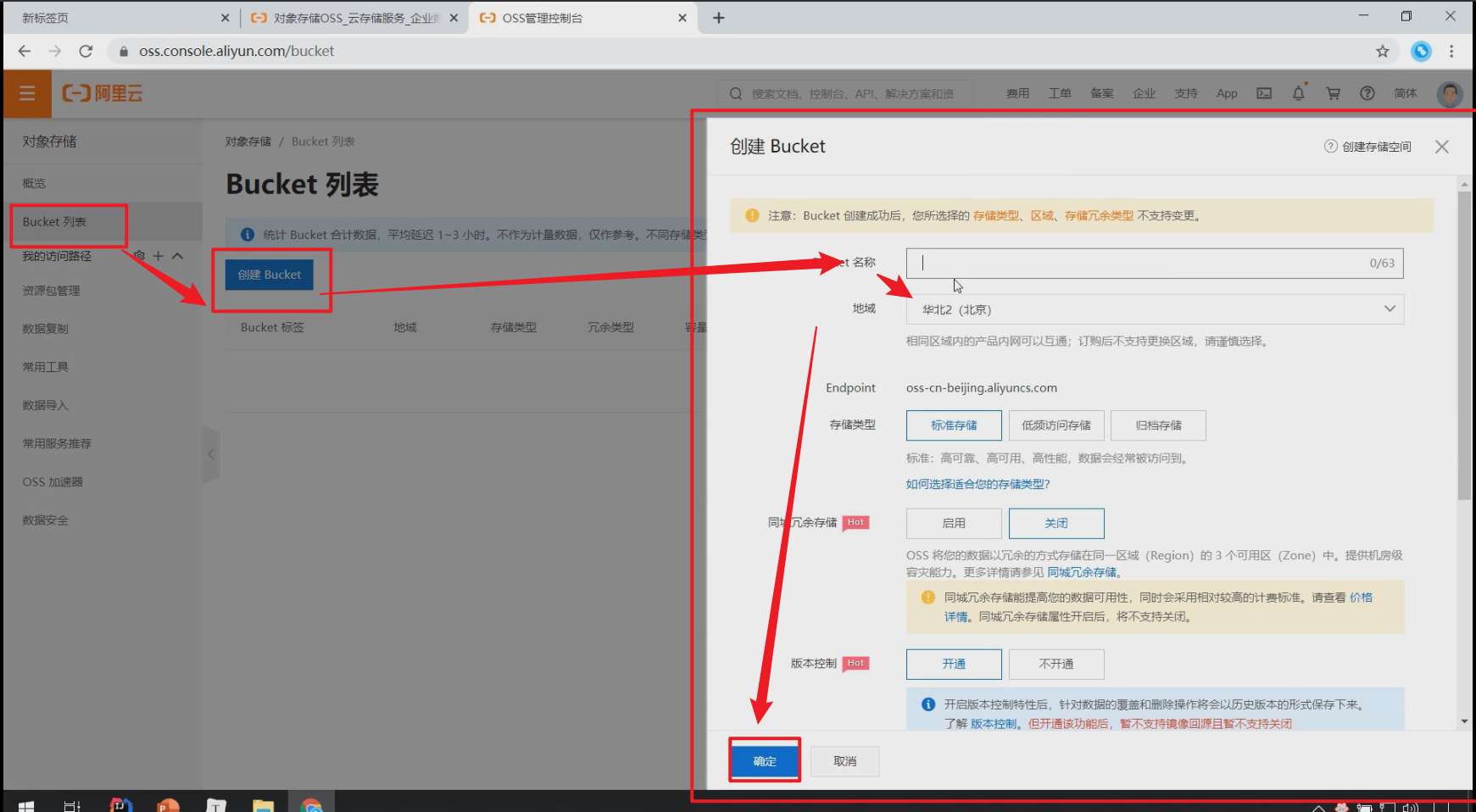
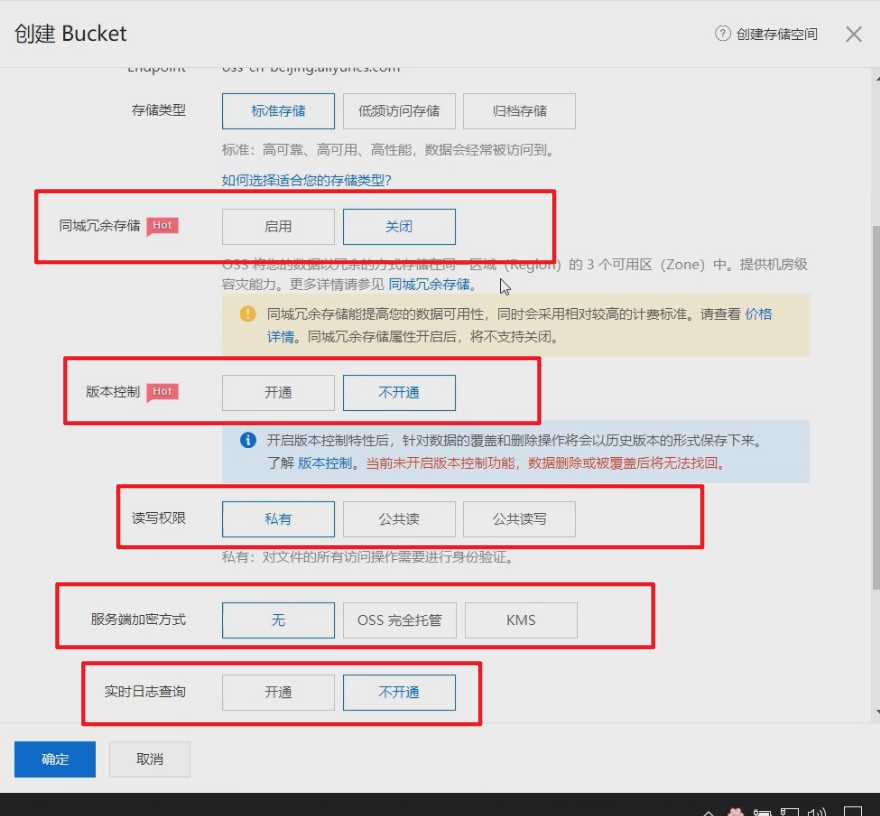
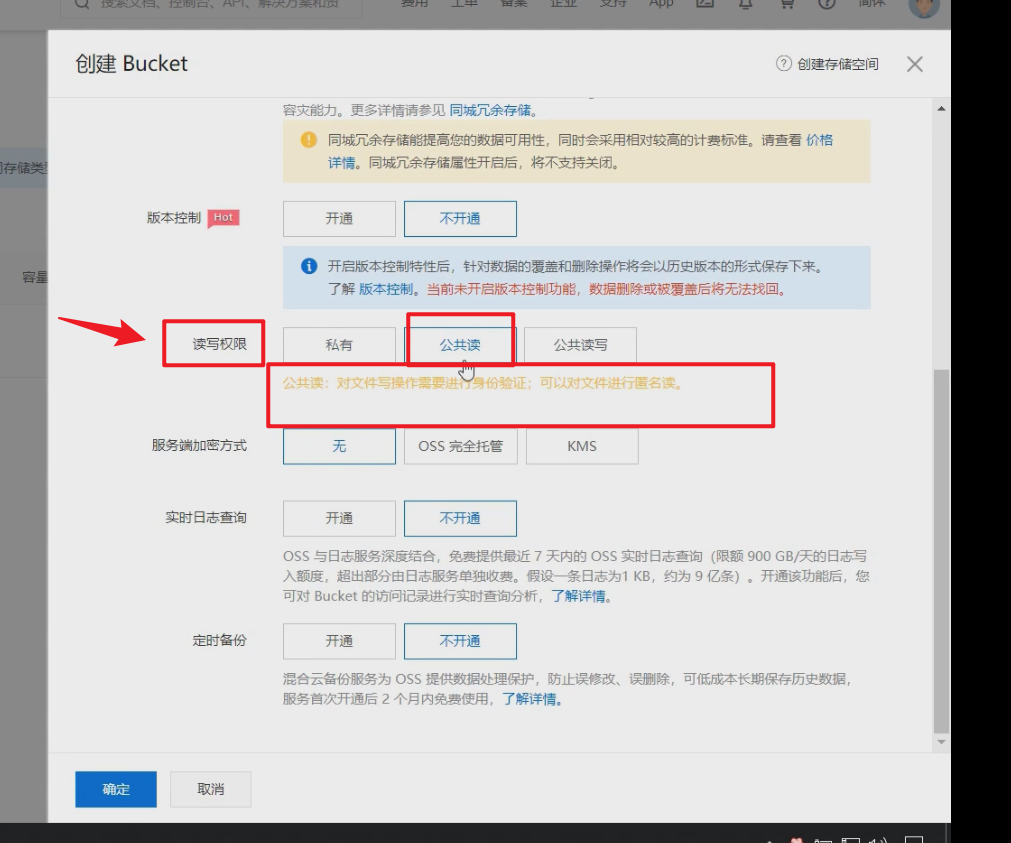
# 2.3)代码测试
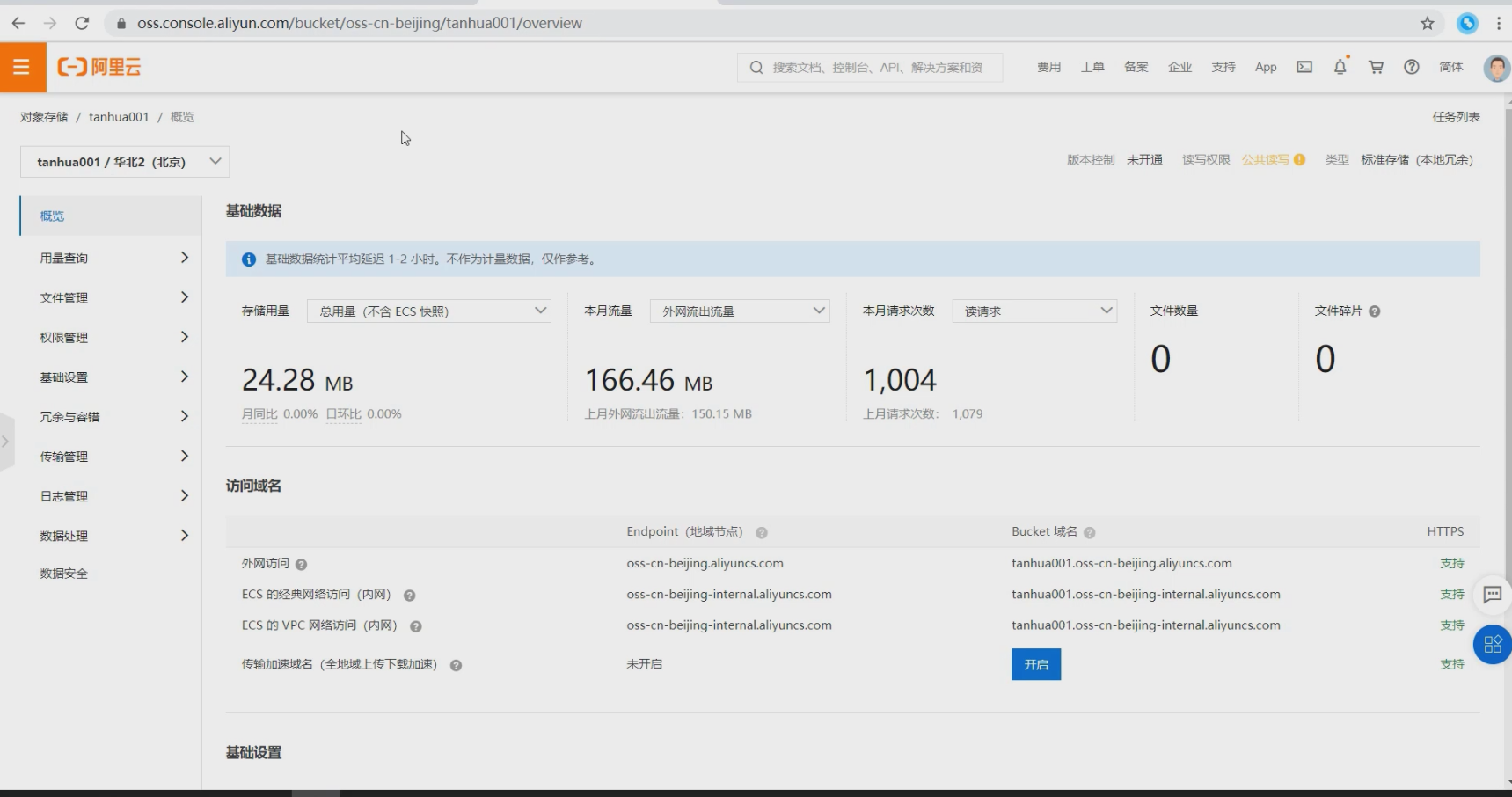
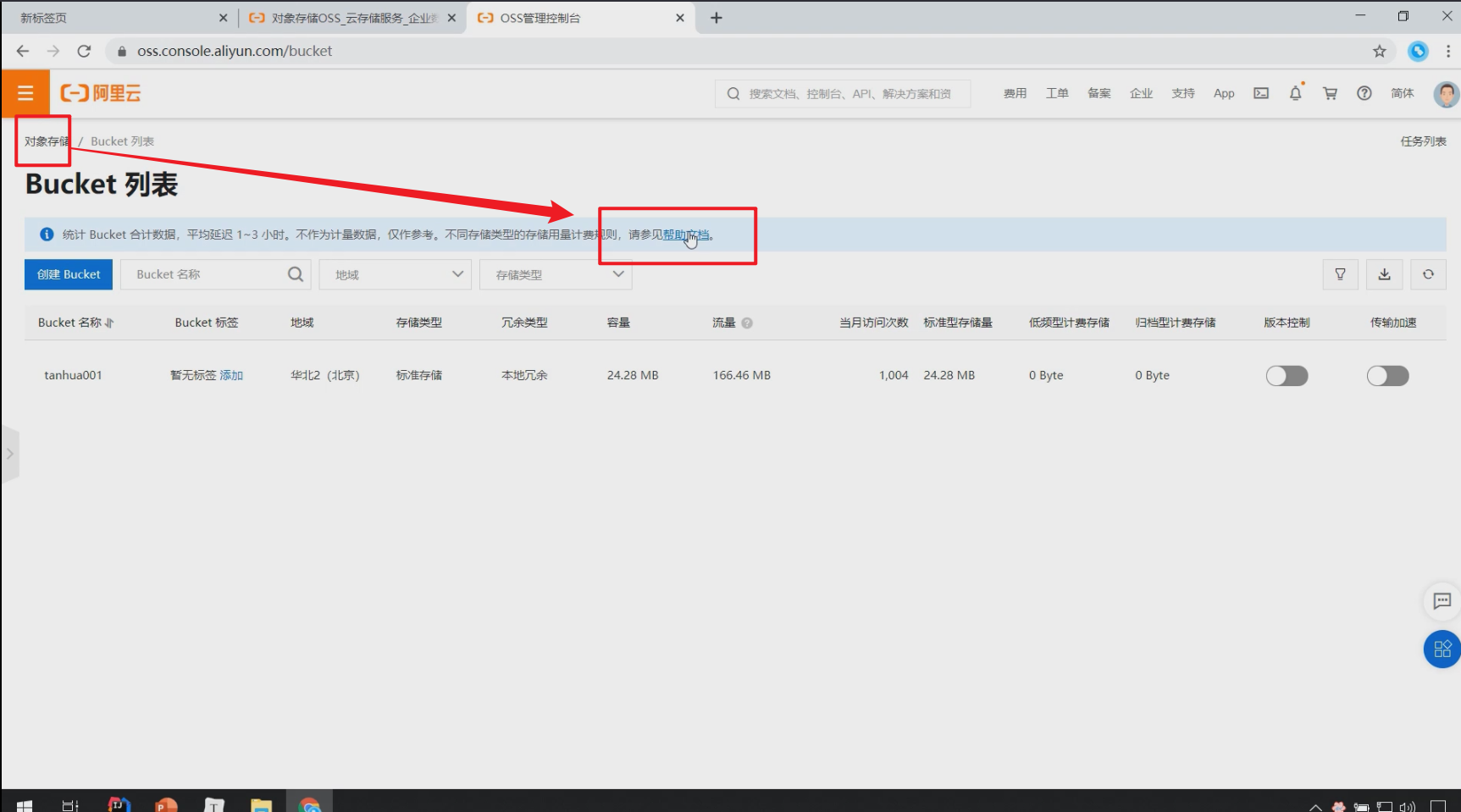
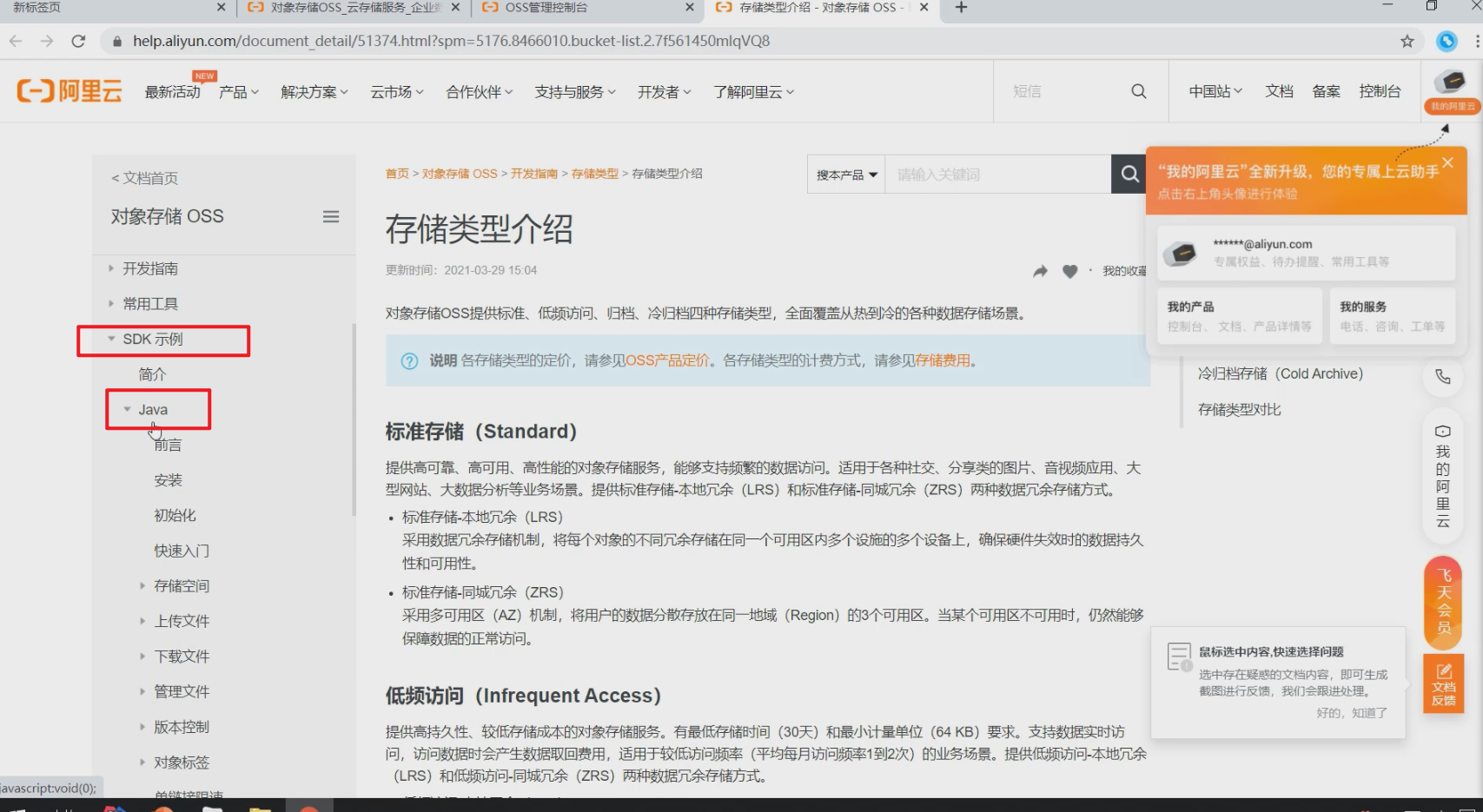
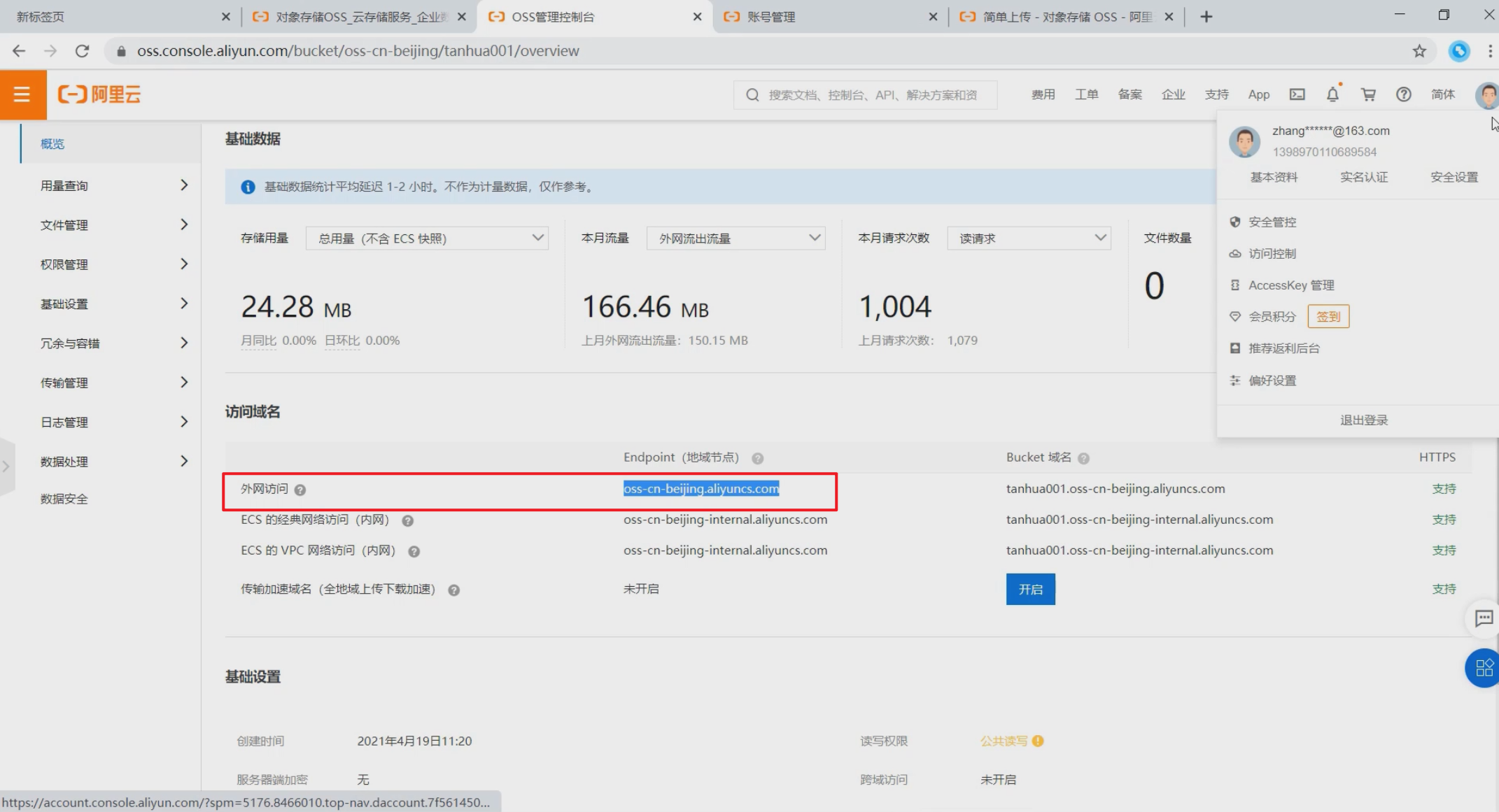
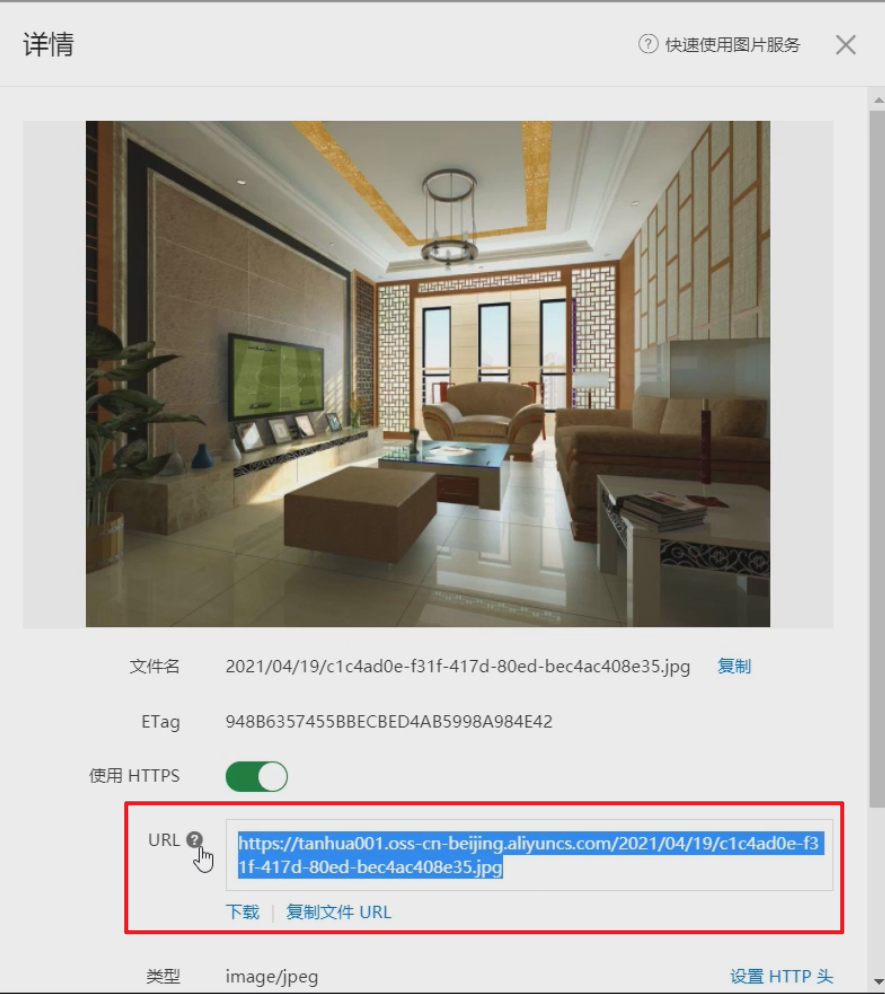
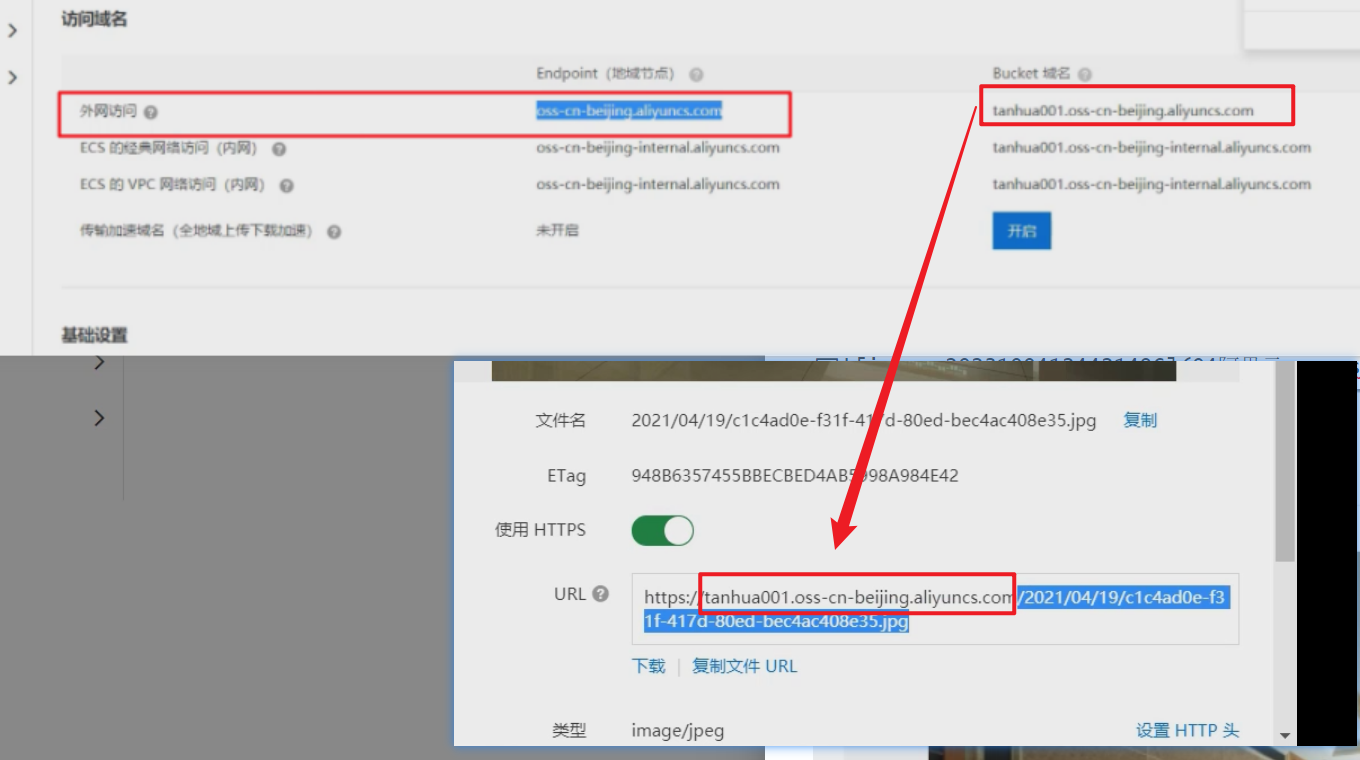
# 抽取模板工具
和发送短信类似,阿里云OSS也是采用自定义工具的形式进行封装
OssProperties
tanhua-autoconfig创建配置类
@Data
@ConfigurationProperties(prefix = "tanhua.oss")
public class OssProperties {
private String accessKey;
private String secret;
// 桶的名字
private String bucketName;
private String url; //域名,访问图片使用的。
private String endpoint;
}
1
2
3
4
5
6
7
8
9
10
11
12
2
3
4
5
6
7
8
9
10
11
12
OssTemplate
tanhua-autoconfig创建模板对象
package com.tanhua.autoconfig.template;
import com.aliyun.oss.OSS;
import com.aliyun.oss.OSSClientBuilder;
import com.tanhua.autoconfig.properties.OssProperties;
import java.io.InputStream;
import java.text.SimpleDateFormat;
import java.util.Date;
import java.util.UUID;
public class OssTemplate {
// 组合
private OssProperties properties;
public OssTemplate(OssProperties properties) {
this.properties = properties;
}
/**
* 文件上传
* 1:文件名称
* 2:输入流
*/
public String upload(String filename, InputStream is) {
// 阿里云机子上的路径
//3、拼写图片路径
filename = new SimpleDateFormat("yyyy/MM/dd").format(new Date())
+"/"+ UUID.randomUUID().toString() + filename.substring(filename.lastIndexOf("."));
// yourEndpoint填写Bucket所在地域对应的Endpoint。以华东1(杭州)为例,Endpoint填写为https://oss-cn-hangzhou.aliyuncs.com。
String endpoint = properties.getEndpoint();
// 阿里云主账号AccessKey拥有所有API的访问权限,风险很高。强烈建议您创建并使用RAM账号进行API访问或日常运维,请登录 https://ram.console.aliyun.com 创建RAM账号。
String accessKeyId = properties.getAccessKey();
String accessKeySecret = properties.getSecret();
// 创建OSSClient实例。
OSS ossClient = new OSSClientBuilder().build(endpoint, accessKeyId,accessKeySecret);
// 填写Byte数组。
// 填写Bucket名称和Object完整路径。Object完整路径中不能包含Bucket名称。
ossClient.putObject(properties.getBucketName(), filename, is);
// 关闭OSSClient。
ossClient.shutdown();
String url = properties.getUrl() +"/" + filename;
return url;
}
}
1
2
3
4
5
6
7
8
9
10
11
12
13
14
15
16
17
18
19
20
21
22
23
24
25
26
27
28
29
30
31
32
33
34
35
36
37
38
39
40
41
42
43
44
45
46
47
48
49
50
51
52
53
54
55
56
57
2
3
4
5
6
7
8
9
10
11
12
13
14
15
16
17
18
19
20
21
22
23
24
25
26
27
28
29
30
31
32
33
34
35
36
37
38
39
40
41
42
43
44
45
46
47
48
49
50
51
52
53
54
55
56
57
TanhuaAutoConfiguration
TanhuaAutoConfiguration加入配置
@EnableConfigurationProperties({
SmsProperties.class,
OssProperties.class
})
public class TanhuaAutoConfiguration {
@Bean
public SmsTemplate smsTemplate(SmsProperties properties) {
return new SmsTemplate(properties);
}
@Bean
public OssTemplate ossTemplate(OssProperties properties) {
return new OssTemplate(properties);
}
}
1
2
3
4
5
6
7
8
9
10
11
12
13
14
15
16
2
3
4
5
6
7
8
9
10
11
12
13
14
15
16
# 测试
tanhua-app-server加入配置内容,并测试
tanhua:
oss:
accessKey: LTAI4GKgob9vZ53k2SZdyAC7
secret: LHLBvXmILRoyw0niRSBuXBZewQ30la
endpoint: oss-cn-beijing.aliyuncs.com
bucketName: tanhua001
url: https://tanhua001.oss-cn-beijing.aliyuncs.com/
1
2
3
4
5
6
7
2
3
4
5
6
7
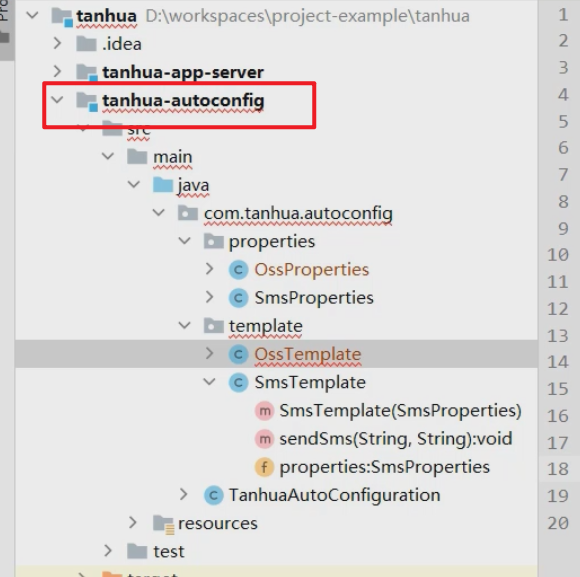
编写测试类
@RunWith(SpringRunner.class)
@SpringBootTest(classes = AppServerApplication.class)
public class OssTest {
@Autowired
private OssTemplate template;
@Test
public void testTemplateUpload() throws FileNotFoundException {
String path = "C:\\Users\\lemon\\Desktop\\课程资源\\02-完善用户信息\\03-资料\\2.jpg";
FileInputStream inputStream = new FileInputStream(new File(path));
String imageUrl = template.upload(path, inputStream);
System.out.println(imageUrl);
}
}
1
2
3
4
5
6
7
8
9
10
11
12
13
14
15
2
3
4
5
6
7
8
9
10
11
12
13
14
15
